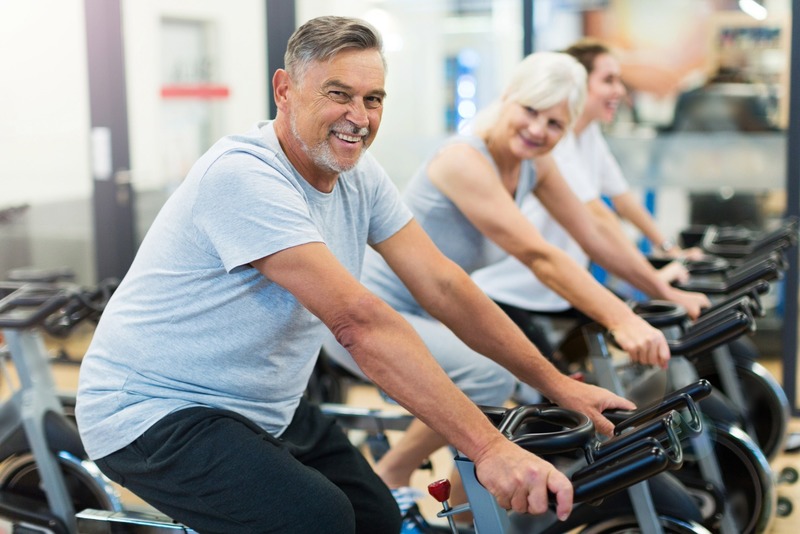News
Warm-Up, Recovery, and Injury Prevention with Lindsey Duhamel

At Vail Health’s Wellness Series event, Fitness As You Age, Lindsey Duhamel, a sports physical therapist with Howard Head Sports Medicine, shared practical strategies for preventing injury and keeping the body ready to move at every stage of life. Originally from Boston, Duhamel moved to the Vail Valley for her sports residency program, where she gained experience working with elite athletes, mountain community members, and local high school students. Today, she continues that work, helping people of all ages stay strong, active, and resilient.
Building on the earlier talks by Genevieve Harrison and Dr. Sarah Robinson, Duhamel emphasized that warm-up and recovery are not extras, they’re essential tools that prepare the body for movement, prevent setbacks, and support healthy aging.
Why Warm-Up Matters
Duhamel encouraged the audience to think of a warm-up as a transition switch. The bridge between daily life and physical activity. Skipping it often leads to injuries, as most occur when people go from “zero to one hundred” without preparation.A good warm-up increases blood flow, elevates heart rate, activates muscles, and protects joints from strain. Just as important, it primes the mind for movement. Whether preparing for a run, a strength session, or a recreational sport, warm-ups act as an insurance policy against injuries like hamstring pulls or shoulder irritation.
Key principles of effective warm-ups include:
- Dynamic over static. Movement-based drills are more effective than holding still stretches.
- Intentional, not rushed. Taking five to ten minutes to focus on targeted areas makes all the difference.
- Activity-specific. Runners should prep hamstrings, calves, and quads; lifters benefit from rotator cuff activation; pickleball players need to warm both shoulders and legs.
Recovery: The Other Half of the Equation
If warm-up is the signal to “start the day,” recovery is the signal to close the laptop, shifting the body back into rest mode. Skipping recovery can increase overuse injuries, while practicing it helps muscles repair, replenishes energy stores, and prevents burnout.Recovery comes in many forms:
- Post-workout cooldowns. Stretching and slowing the heart rate after activity.
- Nutrition and hydration. Fueling the body with water and nutrient-rich foods supports repair.
- Sleep. Perhaps the most powerful recovery tool of all.
- Active recovery. Light activity such as walking or yoga helps keep the body moving without strain.
Injury Prevention as We Age
As we get older, recovery naturally takes longer, muscles and bones gradually decline, and joints lose flexibility. But intentional daily habits can offset these changes. Duhamel highlighted three key principles:- Strength and activity. Even bodyweight exercises help preserve muscle mass, bone density, and balance.
- Mobility and flexibility. Dynamic warm-ups and regular stretching keep joints moving freely and reduce the risk of strains.
- Balance and coordination. Practicing agility drills and balance exercises reduces fall risk as reaction times slow with age.
Closing Thoughts: Small Investments, Lasting Returns
Duhamel’s closing message was clear: injury prevention is lifelong. Warm-up reduces acute injuries, recovery protects against overuse, and daily habits build a foundation for healthy aging.Her takeaways for the audience were simple but powerful:
- Consistency matters more than intensity. Small daily actions protect the body over time.
- Warm-up and recovery are investments, not extras.
- What you do now shapes your future. Today’s habits set the stage for independence, mobility, and resilience later in life.
More News
-
New!
More

Keeping the Peace This Holiday Season: Tools for Handling Tense Moments With Care
Holidays may be joyous, but they often come with awkward moments, family dysfunction and difficult conversations.
-
More

First Chair to Last Call: What Does Alcohol Really Mean For Your Health?
In nearly every Colorado ski town, some iteration of the neon sign blares its play-hard-party-harder anthem. It’s a not-so-subtle nod to mountain party culture, a lifestyle that normalizes combining sports and outdoor adventures with heavy drinking and partying. In Eagle County, après culture, high-altitude living and outdoor performance have coexisted for as long as locals have been sliding on snow. But how much is too much at altitude? And what role do social support systems play in helping residents find balance?
-
More

Counting More Than Steps: How Wearables Can Help (or Hinder) Your Health
From step counts to sleep stages, heart rate variability to blood sugar spikes, wearable devices are giving us a front-row seat to what’s happening inside our bodies. Strapped to wrists, slipped onto fingers or wrapped around our biceps, wearables like the Oura Ring or Whoop strap promise insight and advice in the quest for better health.





